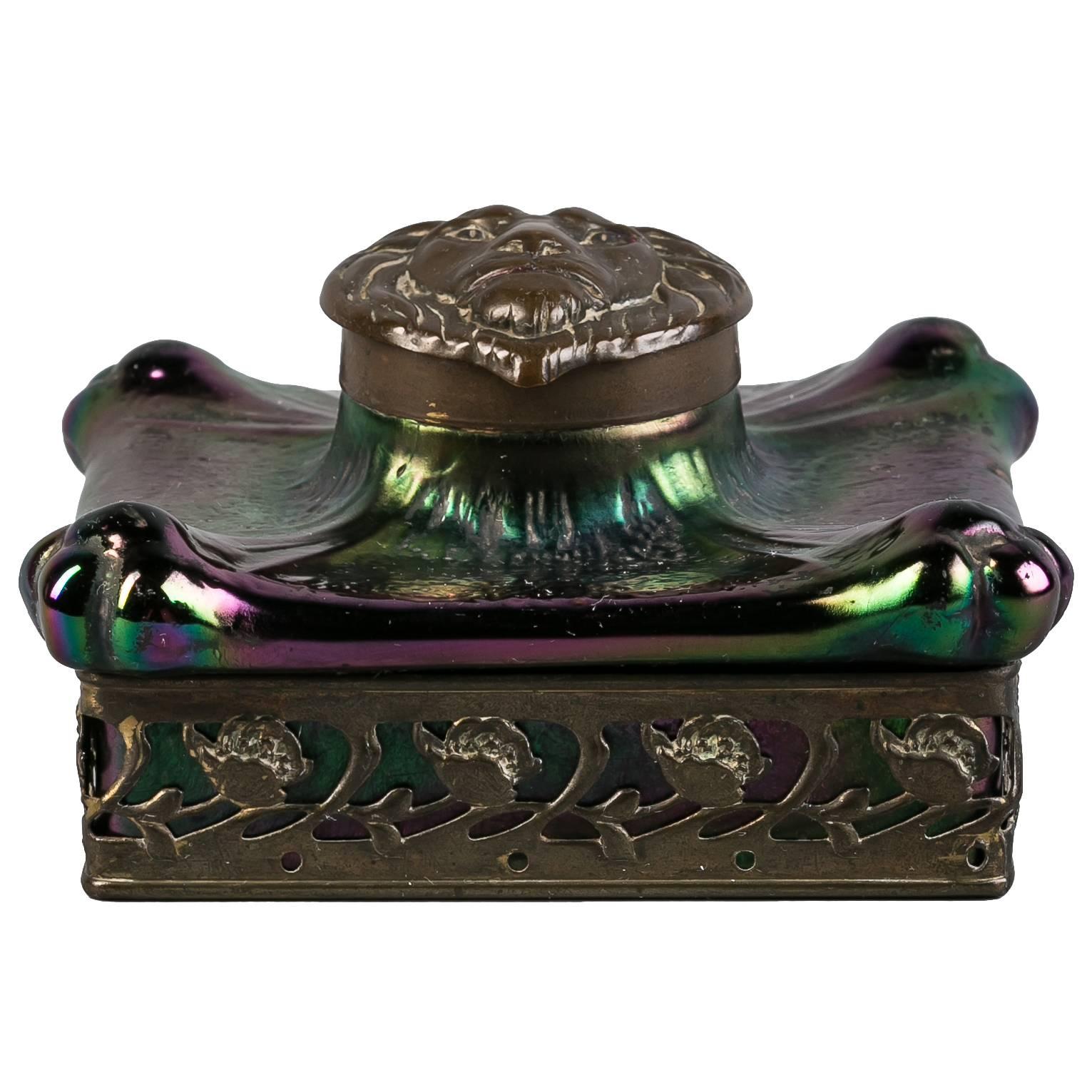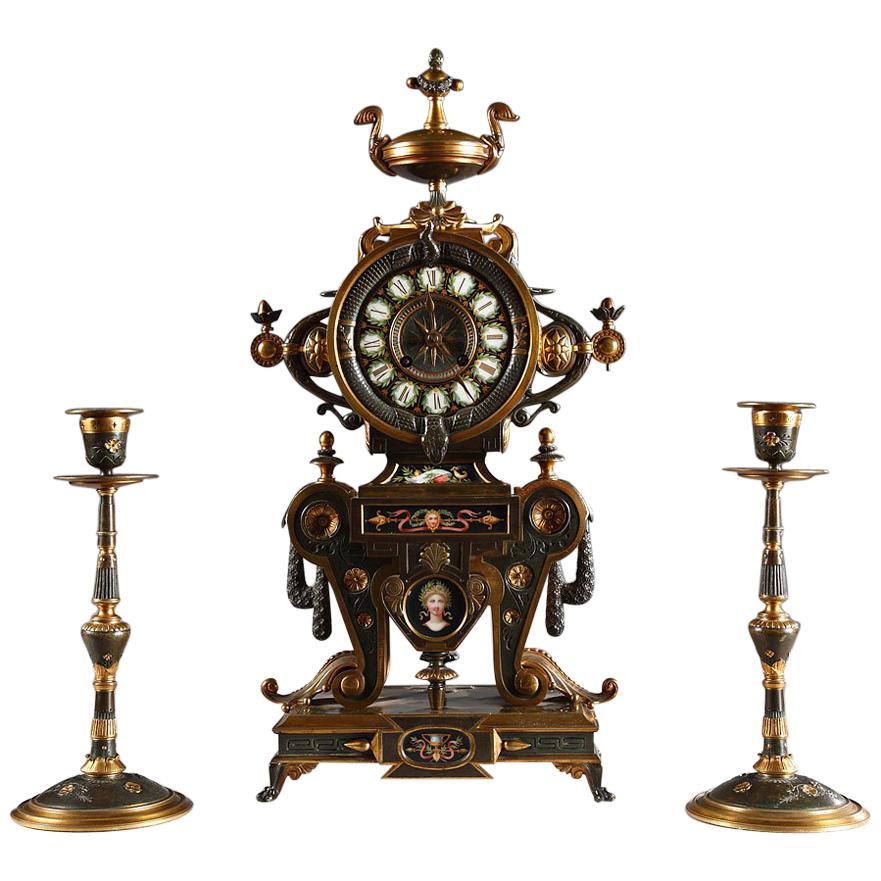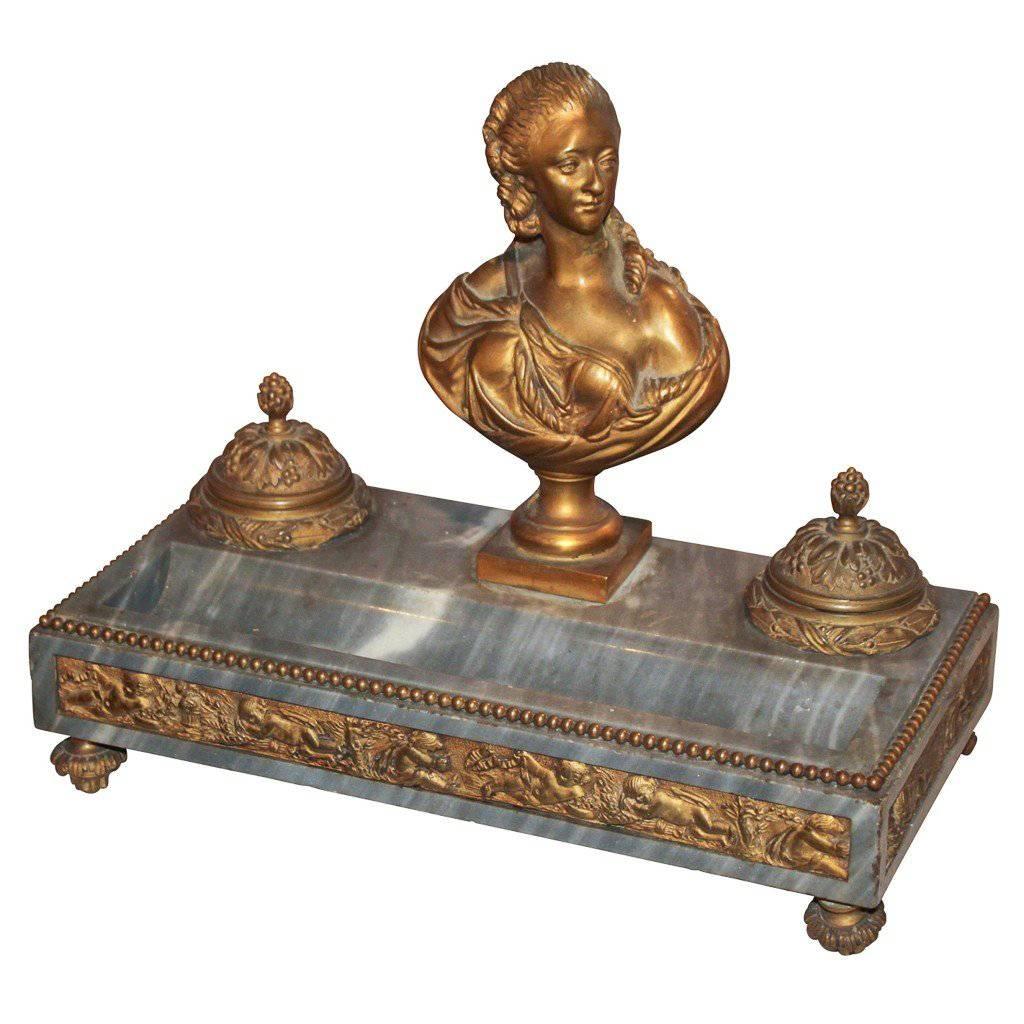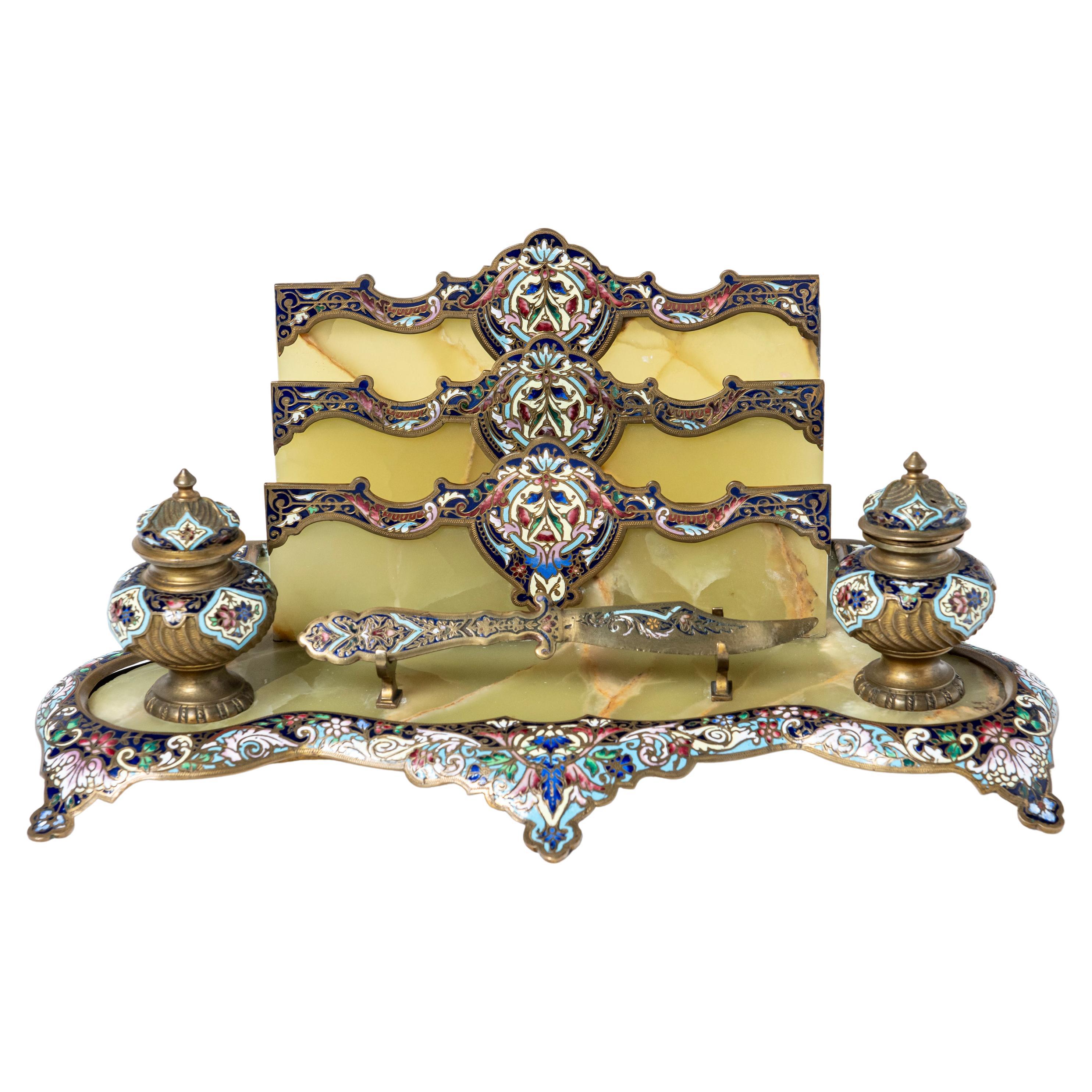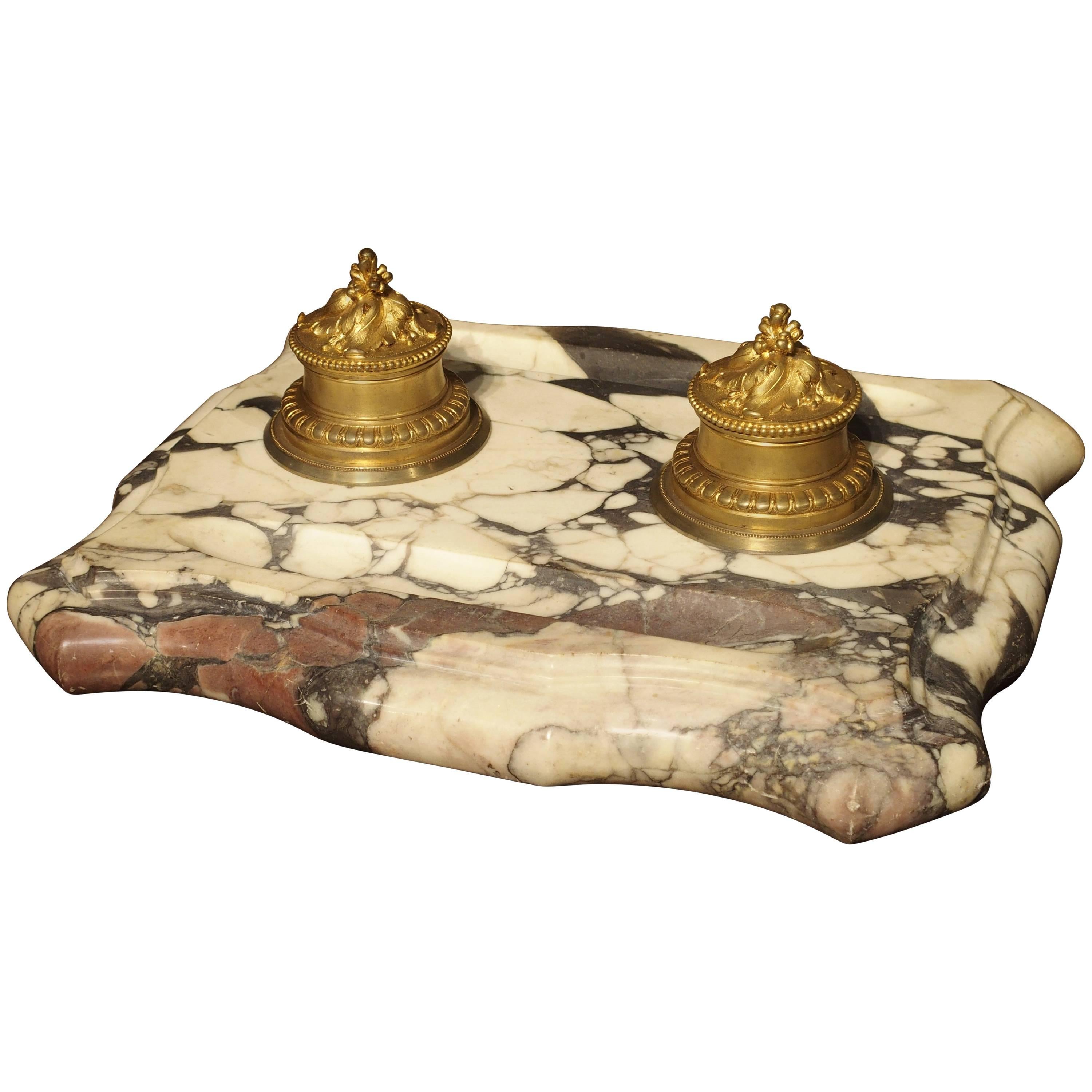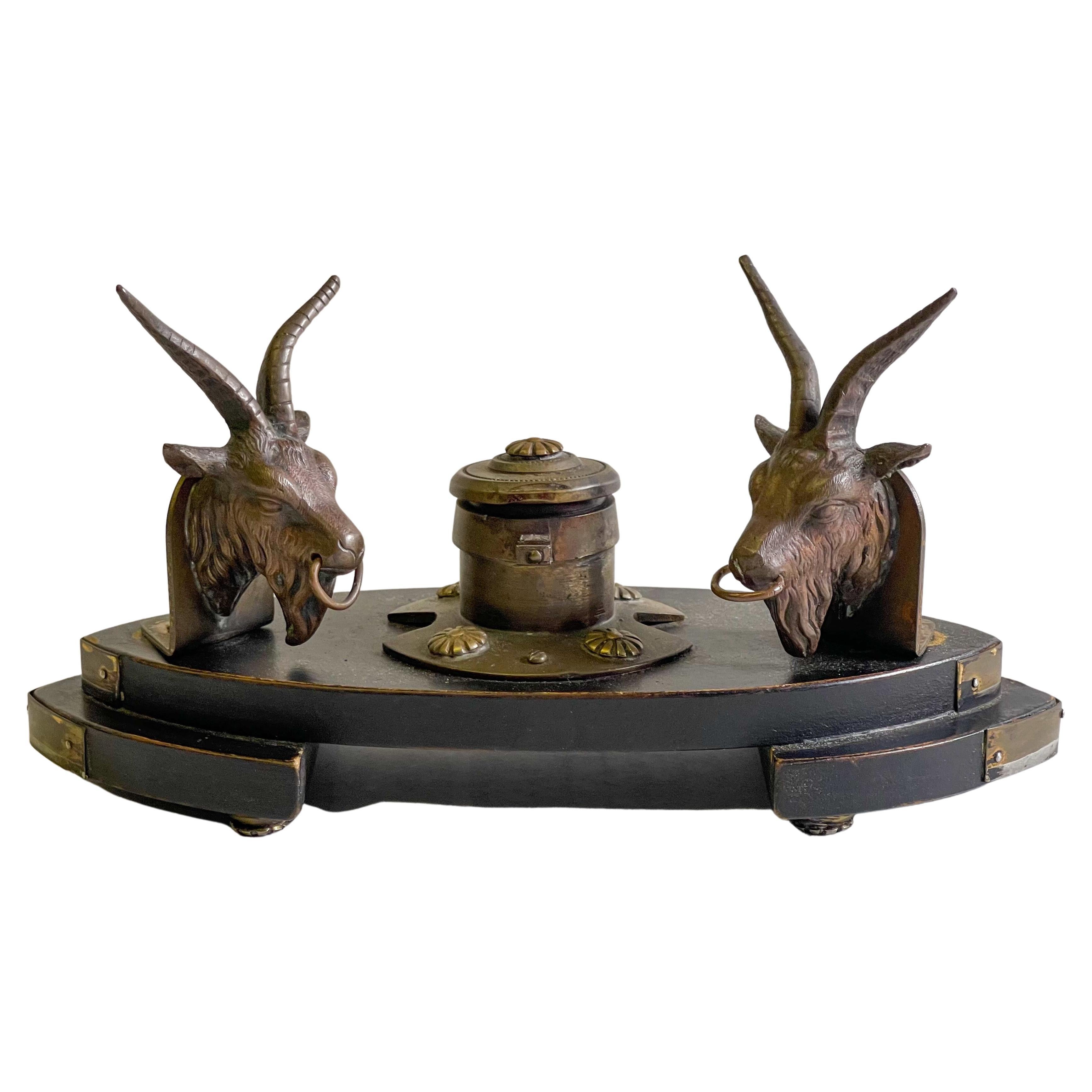Neo-Greek Inkwell by C.G. Diehl, E. Frémiet and J. Brandely, France, Circa 1867
About the Item
- Creator:
- Dimensions:Height: 17.72 in (45 cm)Width: 19.69 in (50 cm)Depth: 9.06 in (23 cm)
- Style:Greek Revival (In the Style Of)
- Materials and Techniques:
- Place of Origin:
- Period:
- Date of Manufacture:circa 1867
- Condition:Wear consistent with age and use.
- Seller Location:PARIS, FR
- Reference Number:
Emmanuel Fremiet
Charles-Guillaume Diehl
Charles-Guillaume Diehl founded his cabinet making and decoration firm at 19 Rue Michel-Le-Comte in 1885. His workshops produced elegant little pieces of furniture in rosewood and thuja and novelties with bronze and porcelain embellishments. It was his luxury boxes, however, (liqueur cellarettes, cigar cabinets, games boxes, cashmere cases, jewelry cases) which assured Diehl’s renown. Already rewarded with a bronze medal at the Universal Exhibition of 1855 in Paris, he exhibited a jardinière with china columns and a liqueur cabinet at the Industrial Arts Exhibition in 1861. In collaboration with the designer Jean Brandely (active from 1867 until 1873), Diehl renovated his decorative repertory and created astonishing pieces of furniture in the Grecian style, which had a dazzling success at the Universal Exhibition in Paris in 1867, where his cabinets also won a silver medal. Certain motifs were so typical of Diehl’s work that they received extensive commentary by the art critic J. Mesnard in his book “Les Merveilles de l’Exposition Universal de 1867”. He writes of a table of which “the pendant bearing hooks and the fan-shaped radiating motif which ornaments the entablature are engraved with love” and a jewelry case where “The head in fine Grecian style makes up the essential part of the fine gilt bronze ornamentation”. For this Universal Exhibition, Diehl also formed a partnership with two famous sculptors: Emile Guillemin (1841–1907), who carved the relief for a mahogany sideboard with galvanic gilt bronzes and Emmanuel Frémiet (1824–1910), who executed the low relief for a cedar medal cabinet with marquetry and silver-plated bronzes. Diehl was again rewarded with a medal of honor at the Union Central Exhibition of 1869 and a progress medal at the Universal Exhibition in Vienna in 1873. Showered with praise by the critics, Diehl is considered one of the most innovative artists of the 19th century. His final appearance was at the 1878 Universal Exhibition in Paris, where he presented outside the competition, his most recent creations, including a work table in marquetry, which with its naturalistic grasshopper motif anticipated Art Nouveau.
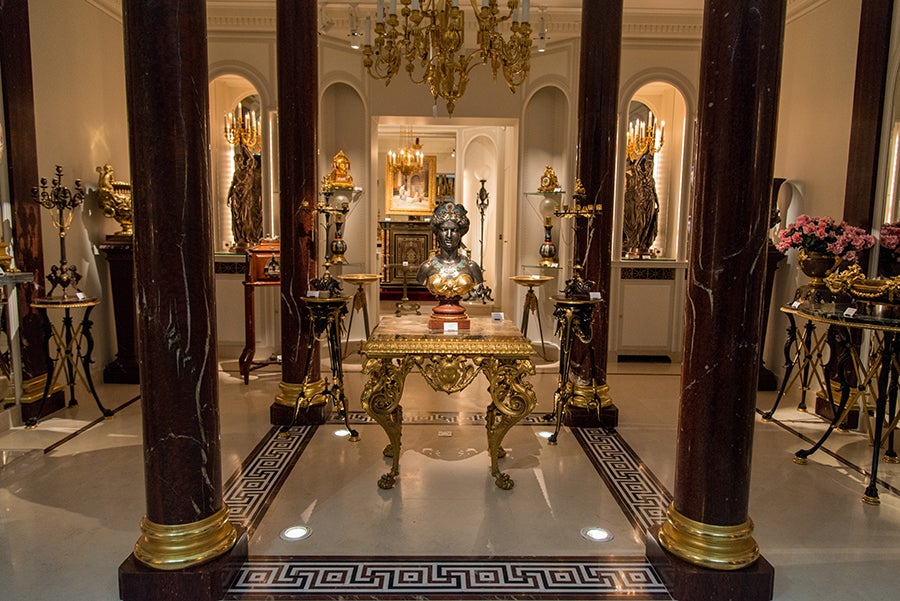
- ShippingRetrieving quote...Ships From: PARIS, France
- Return PolicyA return for this item may be initiated within 7 days of delivery.
- Neo-Greek Cigar Cellarette, C.G. Diehl, E. Frémiet & J. Brandely, Circa 1867By Jean Brandely, Charles-Guillaume Diehl, Emmanuel FremietLocated in PARIS, FRRare cigar humidor made in wood, with a front flap, discovering five sliding cane trays. Beautiful bronze and silver electroplated brass ornaments, such as the central niche decorated with a winged creature, surmounted on top of the cabinet with a feline. Resting on four tall legs joined by a stretcher decorated with a silvered pierced bronze incense burner. The central relief of that cellarette for cigars, with that fantasy creature, is directly inspired from the one designed by J. Brandely for the front door of the Merovingian Cabinet made by Diehl in 1867, and now preserved at the Metropolitan Museum of Art in New York (Inv. 1989.197). Arriving in Paris in about 1840 Charles-Guillaume Diehl (1811-1885) founded his cabinet making and decoration firm at 19 rue Michel-le-Comte in 1885. His workshops produced elegant little pieces of furniture in rosewood and thuja and novelties with bronze and porcelain embellishments (see « Les ébénistes du XIXème siècle »,D. Ledoux-Lebard, Ed. de l’amateur, 1982, p.164). It was his luxury boxes, however (liqueur cellarettes, cigar cabinets, games boxes, cashmere cases, jewelry cases) which assured Diehl’s renown (see « l’Art en France sous le Second Empire », Exposition Grand-Palais, Paris, 1979, p.133). Already rewarded with a bronze medal at the Universal Exhibition of 1855 in Paris, he exhibited a jardinière with china columns and a liqueur cabinet at the Industrial Arts Exhibition in 1861. In collaboration with the designer Jean Brandely (active between 1867 and 1873), Diehl renovated his decorative repertory and created astonishing pieces of furniture in the Grecian style which had a dazzling success at the Universal Exhibition in Paris in 1867, where his cabinets also won a silver medal. Certain motifs were so typical of Diehl’s work that they received extensive commentary by the art critic J. Mesnard in his book « Les Merveilles de l’Exposition Universal de 1867 » (vol. II, pp. 133 & 149). He writes of a table of which « the pendant bearing hooks and the fan shaped radiating motif which ornaments the entablature are engraved with love » (p. 133) and a jewelry case where « The head in fine Grecian style makes up the essential part of the fine gilt bronze ornementation » (p. 149). For this Universal Exhibition of 1867, Diehl also formed a partnership with two famous sculptors : Emile Guillemin (1841-1907) who carved the relief for a mahogany sideboard with galvanic gilt bronzes (Orsay Museum, Paris, Inv. O.A.O. 992) and Emmanuel Frémiet (1824-1910) who executed the low relief for a cedar medal cabinet...Category
Antique 1860s French Greek Revival Tobacco Accessories
MaterialsBrass, Bronze
- Pair of Neo-Greek Pedestals. C.G. Diehl & J.Brandely, France, circa 1867By Jean Brandely, Lebeuf Milliet & Cie Creil Montereau, Charles-Guillaume DiehlLocated in PARIS, FRExceptional pair of neo-Greek style pedestals, made in blackened pearwood, gilded galvanic bronze and glazed earthenware. The sheath-shaped shaft is decorated with rectangular plates...Category
Antique 1860s French Greek Revival Pedestals
MaterialsBronze
- Lovely Neo-Greek Planter Attributed to C-G Diehl, France, Circa 1870By Charles-Guillaume DiehlLocated in PARIS, FRCircular plant pot with a double tray united by a black tripod attributed to C-G Diehl. Charming wood marquetry. A beautiful gilded bronze adornment complete this piece. Arriving in...Category
Antique 1870s French Greek Revival Planters and Jardinieres
MaterialsBronze
- Fine Neo-Greek Clock Set by H. Houdebine, France, Circa 1867By Henri HoudebineLocated in PARIS, FRDial signed H. Houdebine, Fabricant de Bronzes, Rue de Turenne 64, Paris and clockwork signed Japy Frères & Cie – Médaille d’Honneur A very fine neo-Greek style clock set made up of...Category
Antique 1860s French Greek Revival Table Clocks and Desk Clocks
MaterialsBronze
- Large Neo-Greek Vase by F. Levillain & F. Barbedienne, France, circa 1890By Ferdinand Levillain, Ferdinand BarbedienneLocated in PARIS, FRImportant neo-Greek vase in the shape of an Amphora, made in two patina bronze. The body is decorated with a rich continuous frieze in bas-relief presenting a procession of characters carrying their offerings to the temple, underlined by a decoration of theatrical masks among olive trees. The 's'-scroll handles decorated with grape vines, resting only on the shoulder of the vase, are supported by a ram’s head. Numerous palmettes and friezes adorn the whole. Resting on a molded marble circular base. Biography Ferdinand Levillain (Paris, 1837-1905) studied under the sculptor Jouffroy (1806-1882), before making his debut in 1861 at the French Artists Salon where he continued to exhibit until 1903. At the 1867 Universal Exhibition in Paris, he was praised for a Neo-Greek style bronze cup he made for the firm Blot and Drouard. He was not to become really famous, however, until 1871 thanks to his association with the great bronze founder Ferdinand Barbedienne, who began to exhibit Neo-Greek style lamps...Category
Antique 1890s French Greek Revival Vases
MaterialsMarble, Bronze
- Pair of Neo-Greek Andirons by F. Barbedienne, France, Circa 1870By Ferdinand BarbedienneLocated in PARIS, FRMeasures: Height : 47 cm (18,5 in.) ; Width : 70 up to 96 cm (27,5 – 37,8 in.) ; Depth : 6 cm (2,3 in.) A rare pair of square shaped andirons, made in gilded bronze and polychrome...Category
Antique 1870s French Greek Revival Fireplace Tools and Chimney Pots
MaterialsBronze, Enamel
- Antique French Bronze and Marble Inkwell, circa 1880Located in Dallas, TX19th century French inkwell depicting a beautiful woman. Striking color combination of soft grey marble with contrasting bronze, circa 1880.Category
Antique 1880s French Inkwells
MaterialsBronze
- Onyx, Champlevé and Gilt Bronze Inkwell, France, circa 1890.Located in Buenos Aires, Buenos AiresOnyx, Champlevé and Gilt Bronze Inkwell, France, circa 1890.Category
Antique 1890s French Belle Époque Inkwells
MaterialsOnyx, Bronze
- Large Antique French Marble and Bronze Inkwell, circa 1880Located in Dallas, TXThis is a stunning, large, antique French marble and gilt bronze double inkwell. The inkwells’ lids are hinged to the wells and have motifs of swirling leaves with berries culminatin...Category
Antique 1870s French Louis XIV Inkwells
MaterialsMarble, Bronze
- French Patinated Metal and Iridescent Glass Inkwell, circa 1900Located in New York, NYFrench patinated metal and iridescent glass inkwell, circa 1900. With lions head as cover.Category
Early 20th Century French Inkwells
MaterialsGlass
- 19th-C. French Neo-Classical Style Gilt Bronze Ram Form InkwellLocated in Kennesaw, GAThis is a mid-19th century French gilt bronze neo-classical style ram form inkwell. It has dual rams to possibly hold the writing instrument.Category
Antique Mid-19th Century French Neoclassical Inkwells
MaterialsBronze
- 19th Century French Neo-Classical Style Gilt Bronze Desk InkwellLocated in Kennesaw, GAThis is a 19th century French gilt bronze inkwell. Perfect coffee table art or desk statement piece. It is in very good condition and unmarked.Category
Antique Mid-19th Century French Neoclassical Inkwells
MaterialsBronze
